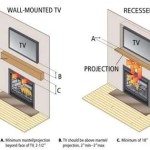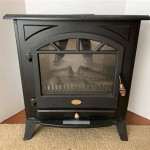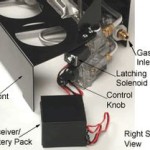Mounting a TV Above a Gas Fireplace Insert: Considerations and Best Practices
The integration of entertainment and ambiance has become increasingly popular in modern homes. Mounting a television above a gas fireplace insert represents a common approach to achieving this blend. However, the decision to place a TV above a fireplace requires careful consideration of several factors to ensure both the longevity of the television and the safety of the installation. This article will delve into the key considerations, potential challenges, and recommended practices associated with mounting a TV above a gas fireplace insert.
Heat Management: The Critical Factor
The primary concern when mounting a TV above a gas fireplace insert is heat management. Televisions are electronic devices sensitive to high temperatures. Excessive heat can damage internal components, shorten the lifespan of the TV, and potentially void the manufacturer's warranty. Understanding the heat output of the fireplace insert and implementing strategies to mitigate its effects is paramount.
Gas fireplace inserts generate heat through combustion, with the majority of the heat radiating upwards. The temperature directly above the fireplace can be significantly higher than the ambient room temperature. This temperature gradient presents a challenge for mounting a television, as the elevated heat can accumulate around the back of the TV. The severity of the heat issue depends on factors such as the fireplace insert's BTU rating (British Thermal Units, a measure of heat output), the design of the fireplace surround, the distance between the fireplace and the TV, and the ventilation characteristics of the space.
To assess the heat situation, it is recommended to operate the fireplace at its maximum setting for an extended period (at least an hour) and monitor the temperature on the wall where the TV will be mounted. A simple thermometer or a more sophisticated infrared thermometer can be used to gauge the surface temperature. If the temperature exceeds the TV manufacturer's recommended operating temperature (typically around 100-110°F or 38-43°C), strategies to reduce heat exposure must be implemented.
One effective approach is to install a mantel. A mantel acts as a heat shield, deflecting rising heat away from the wall above. The deeper the mantel, the more effective it will be in redirecting heat. The mantel's material also plays a role; non-combustible materials like stone or concrete are preferable. The distance between the top of the fireplace and the bottom of the mantel is also crucial. A sufficient vertical space allows for proper airflow and prevents heat from accumulating.
Another strategy involves increasing the distance between the fireplace and the TV. Mounting the TV higher on the wall reduces its exposure to rising heat. However, this can compromise the viewing angle and aesthetic appeal. Careful consideration should be given to the optimal viewing height to balance heat management with viewing comfort.
Ventilation is also critical. Ensuring adequate airflow around the TV helps dissipate heat and prevents it from building up. Avoid enclosing the TV in a tight space without proper ventilation. Consider installing vents in the wall or custom cabinetry to allow for airflow. A small fan strategically placed to circulate air can also be effective.
Some gas fireplace inserts are specifically designed with features to mitigate heat accumulation above the unit. These features may include built-in heat shields, blowers that direct heat outwards into the room, or designs that minimize heat radiation upwards. When selecting a gas fireplace insert for use with a TV mounted above it, it is prudent to research models with these heat-reducing features.
Structural Considerations and Mounting Techniques
Beyond heat management, the structural integrity of the wall and the mounting technique employed are also important. The wall must be capable of supporting the weight of the TV, the mounting bracket, and any associated cables or accessories. Typically, it is best to mount the TV to wall studs, which provide the most secure anchoring points.
Locating the wall studs is essential for safe and secure mounting. A stud finder can be used to identify the position of the studs behind the drywall. If studs are not conveniently located in the desired mounting position, horizontal bracing may be required. This involves installing additional wooden supports between the studs to provide a solid mounting surface. A qualified contractor should perform this type of structural modification.
Selecting the appropriate mounting bracket is also critical. There are several types of TV mounting brackets available, each with its own advantages and disadvantages. Fixed mounts are the simplest and most affordable option, providing a secure but non-adjustable mounting position. Tilting mounts allow the TV to be tilted downwards, improving viewing angles, especially when the TV is mounted higher on the wall. Full-motion mounts, also known as articulating mounts, offer the greatest flexibility, allowing the TV to be swiveled and tilted in multiple directions. The type of mount chosen should be based on the viewing needs, the size and weight of the TV, and the desired level of adjustability.
Regardless of the type of mounting bracket used, it is essential to use the correct hardware. Lag bolts are typically used to secure the bracket to the wall studs. The length and diameter of the lag bolts should be appropriate for the weight of the TV and the thickness of the wall studs. Using the wrong hardware can compromise the structural integrity of the installation and potentially lead to the TV falling from the wall.
Cable management is another important consideration. Concealing the cables running from the TV to other devices (such as cable boxes, DVD players, and gaming consoles) enhances the aesthetic appeal of the installation and prevents tripping hazards. There are several ways to conceal cables, including running them through the wall using cable management kits, using cable raceways, or concealing them behind decorative panels.
It is advisable to consult with a qualified electrician to ensure that the electrical wiring is up to code and that there are sufficient outlets near the mounting location. Avoid running extension cords or power strips behind the wall, as this can be a fire hazard.
Viewing Angle and Ergonomics
Mounting a TV above a gas fireplace insert often results in a higher viewing angle than is ergonomically ideal. Viewing a TV at a high angle for extended periods can strain the neck and cause discomfort. It is essential to consider the viewing angle when determining the optimal mounting height for the TV.
The ideal viewing angle is generally considered to be level with or slightly below eye level when seated. This minimizes neck strain and provides the most comfortable viewing experience. However, when mounting a TV above a fireplace, achieving this ideal viewing angle may not be possible due to the placement of the fireplace and the desired aesthetic.
Using a tilting mount can help improve the viewing angle by allowing the TV to be tilted downwards towards the viewer. The amount of tilt required will depend on the mounting height of the TV and the distance between the TV and the seating area. Careful experimentation may be necessary to find the optimal tilt angle for comfortable viewing.
The size of the TV also plays a role in the viewing experience. A larger TV can compensate for a higher viewing angle by providing a greater field of view. However, a TV that is too large for the viewing distance can also be uncomfortable to watch. It is important to choose a TV size that is appropriate for the size of the room and the viewing distance.
Consider the seating arrangement in the room. The distance between the seating area and the TV will affect the optimal viewing angle. If the seating area is far from the TV, a higher mounting position may be required to ensure that the TV is easily visible.
Ultimately, finding the optimal mounting height and viewing angle is a matter of balancing heat management, aesthetic considerations, and ergonomic comfort. It may be necessary to make compromises in one area to achieve a satisfactory result in another. Careful planning and experimentation are essential to ensure a comfortable and enjoyable viewing experience.

Can I Mount My Tv Above The Fireplace

Can I Mount My Tv Above The Fireplace

3 Tips For Installing A Tv Over Your Fireplace

Can I Hang A Tv Over My Fireplace Woodlanddirect Com

Should I Mount A Tv Over Hole In The Wall Gas Fire Rigbys

ᑕ❶ᑐ What To Consider Before Mounting A Tv Above Fireplace

Mounting Your Tv Above Fireplace

3 Myths About Mounting Tvs Over Fireplaces Monmouth County

Pros And Cons Of Mounting Your Tv Over Fireplace Vancouver Gas Fireplaces

Should You Mount A Tv Over Fireplace








